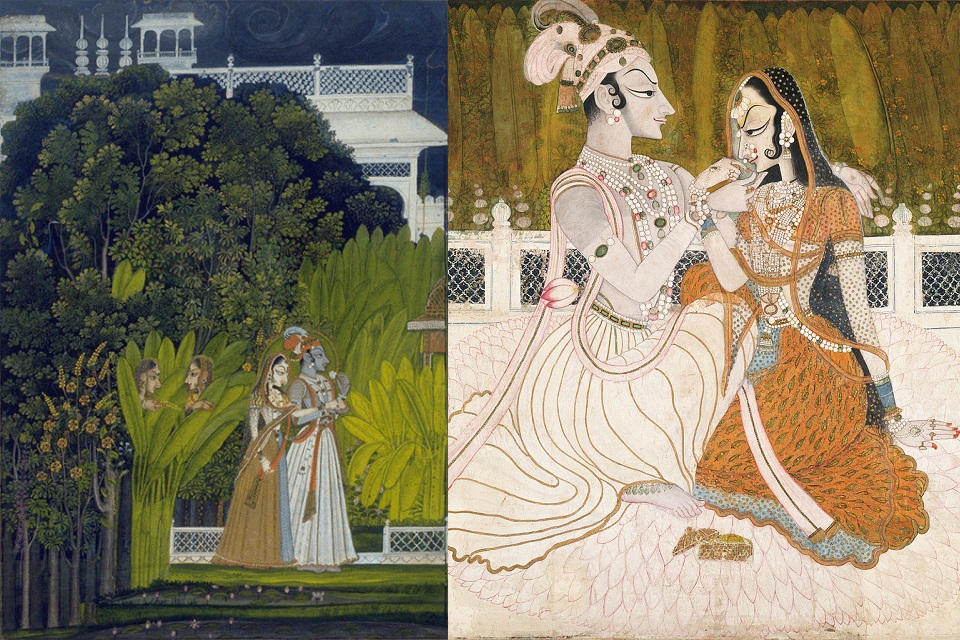Bani Thani


Bani Thani refers to an Indian miniature painting painted by Nihâl Chand from the Marwar school of Kishangarh. It portrays a woman who is elegant and graceful. The painting’s subject, Bani Thani, was a singer and poet in Kishangarh in the time of king Sawant Singh (1748–1764). She has been compared to the Mona Lisa.
Inspired by Radha, Bani Thani is characterized by idealized distinct features such as arched eyebrows, lotus-like elongated eyes and pointed chin. This painting was featured in an Indian stamp issued on 5 May 1973.
Legend
Bani Thani was believed to be the mistress of King Sawant Singh, and later became one of his wives. Her real name was Vishnupriya. She was a singer employed by his stepmother and he was drawn to her because of her beauty and singing. She came to be known as ‘Bani Thani’, which means “the decked out lady”, because of the exquisite jewellery and makeup that she used to adorn herself with after becoming queen. He also wrote poetry for her under the pen name of Nagari Das. Their love bloomed due to a shared interest in singing, poetry and devotion for Krishna. She also wrote poetry under the pen name of Rasikbihari. Later, he commissioned his artists to depict their relationship in a way similar to the love between Radha and Krishna. Both lovers died in the 1760s. They have twin chhatris dedicated to them near the Nagari Kunj temple.
Style and theme
The Kishangarh school of art is notable for its elongated style, with “arched eyebrows, lotus-like elongated eyes and pointed chin” a highly idealized facial form reminiscent of Indian sculpture art. Kishangarh was influenced by Būndi painting in its use of lush vegetation, dramatic night skies, vivid movement and Mughal painting in its use of side-profile portraits, though it can be distinguished from both of them due to its extremely meticulous details, rich colours and fine technique. The patron-king Savant Singh was a member of the Vallabhācārya sect devoted to Krishna, due to which religiously themed paintings flourished in the court under his patronage. The paintings of Kishangarh school are characterised by a religious fervour and this might have been the reason why the portraiture of the queen was compared to, and is believed to have been inspired by, the figure of Radha.
The Sringara-rasa Nayika
Within the Ashta Nayika classification system of heroines, the Bani Thani is identified as the Vasakasajja Nayika type, with the element of Sringara rasa (romantic love) predominating. Hence, the painting conveys the passionate and romantic elements of the legend. She has been portrayed with all the elements of Sringara and exaggerated facial features which are unrealistic but striking. This style of portraiture later became the standard of beauty in all the later paintings of the Kishangarh school.
Source from Wikipedia